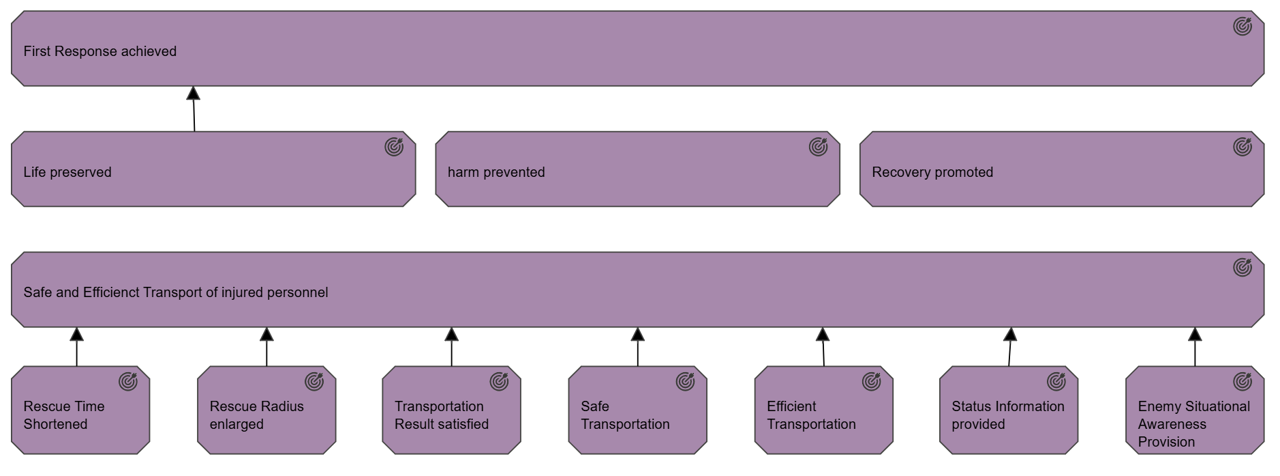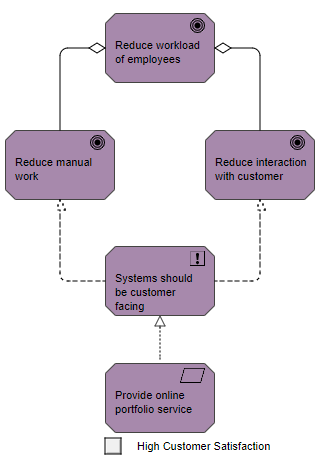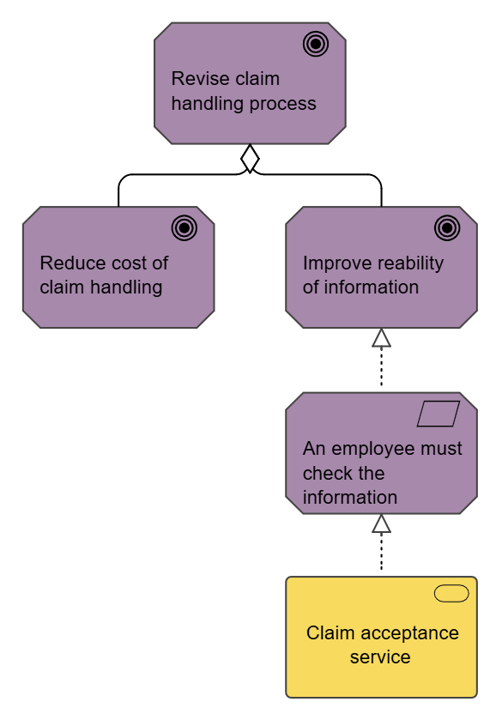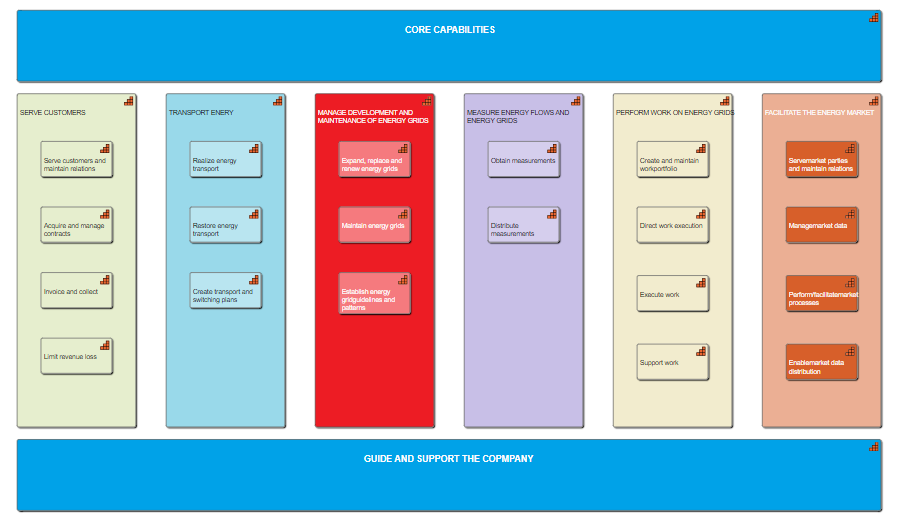Concerns: Business-oriented results
Purpose: Designing, deciding
Scope: Strategy
The outcome realization viewpoint is used to show how the highest-level, business-oriented results are produced by the capabilities and underlying core elements.

Concerns: Business-oriented results
Purpose: Designing, deciding
Scope: Strategy
The outcome realization viewpoint is used to show how the highest-level, business-oriented results are produced by the capabilities and underlying core elements.

Concerns: Architecture mission and strategy, motivation
Purpose: Designing, deciding, informing
Scope: Motivation
The stakeholder viewpoint allows the analyst to model the stakeholders, the internal and external drivers for change, and the assessments (in terms of strengths, weaknesses, opportunities, and threats) of these drivers. Also, the links to the initial (high-level) goals that address these concerns and assessments may be described. These goals form the basis for the requirements engineering process, including goal refinement, contribution and conflict analysis, and the derivation of requirements that realize the goals.

Concerns: Architecture mission, strategy and tactics, motivation
Purpose: Designing, deciding
Scope: Motivation
The goal realization viewpoint allows a designer to model the refinement of (high-level) goals into more tangible goals, and the refinement of tangible goals into requirements or constraints that describe the properties that are needed to realize the goals. The refinement of goals into sub-goals is modeled using the aggregation relationship. The refinement of goals into requirements is modeled using the realization relationship.
In addition, the principles may be modeled that guide the refinement of goals into requirements.

Concerns: Architecture strategy and tactics, motivation
Purpose: Designing, deciding, informing
Scope: Motivation
The requirements realization viewpoint allows the designer to model the realization of requirements by the core elements, such as business actors, business services, business processes, application services, application components, etc. Typically, the requirements result from the goal refinement viewpoint.
In addition, this viewpoint can be used to refine requirements into more detailed requirements. The aggregation relationship is used for this purpose.

Concerns: Architecture strategy and tactics, motivation
Purpose: Designing, deciding, informing
Scope: Motivation
The motivation viewpoint allows the designer or analyst to model the motivation aspect, without focusing on certain elements within this aspect. For example, this viewpoint can be used to present a complete or partial overview of the motivation aspect by relating stakeholders, their primary goals, the principles that are applied, and the main requirements on services, processes, applications, and objects.

Concerns: Strategy development
Purpose: Designing, deciding
Scope: Strategy
The strategy viewpoint allows the business architect to model a high-level, strategic overview of the strategies (courses of action) of the enterprise, the capabilities and resources supporting those, and the envisaged outcomes.
Concerns: Architecture strategy and tactics, motivation
Purpose: Designing, deciding
Scope: Strategy
The capability map viewpoint allows the business architect to create a structured overview of the capabilities of the enterprise. A capability map typically shows two or three levels of capabilities across the entire enterprise. It can, for example, be used as a heat map to identify areas of investment. In some cases, a capability map may also show specific outcomes delivered by these capabilities.
